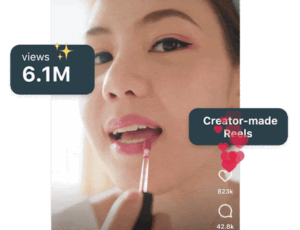 “Data-Driven Thinking” is written by members of the media community and contains fresh ideas on the digital revolution in media.
“Data-Driven Thinking” is written by members of the media community and contains fresh ideas on the digital revolution in media.
Today’s column is written by Frances Giordano, associate director at The Media Kitchen.
The newest catalyst framing the discussion between digital media sellers and buyers is the increasing prevalence of first-price auctions.
About 43% of all digital ad impressions from supply-side platforms (SSPs) were sold through first-price auctions, according to eMarketer. Like header bidding before it, this fundamentally changes the auction dynamic and the way marketers buy online ads. From a buyer’s perspective, auction changes like this require their teams to stay in close communication with SSPs, demand-side platforms (DSPs) and publisher partners alike or risk overpaying.
As part of day-to-day operations, buyers must analyze campaigns and attempt to identify larger macro trends, if any, that are affecting the marketplace. Due to a lack of transparency, buyers realized we were working with imperfect data. As header bidding grew, buyers and sellers knew we were bidding with imperfect data, but the exact scale was unknown, making it difficult to adapt strategies and assess the overall impact. Eventually it was possible to curate header-specific PMP deals set up with SSPs and publishers, which provided some transparency into the auction.
The growth of first-price auctions is creating the same lack of transparency all over again. DSPs and SSPs have announced that further transparency into auction mechanics is on the road map, but buyers are stuck asking how can we address the situation right now? How do we stay up to date on the current auction dynamics when a lack of standardization means the rules keep changing?
It leaves buyers with a new task: gathering first- and second-price auction clarity from the sell side. Then buyers have to work with their DSPs and ad tech partners to understand best practices within platforms to manage the changing auction dynamics.
With each SSP behaving differently and some allowing individual publishers to determine their auction dynamic, the complexity keeps stacking up and it isn’t manageable for buyers to access every situation, especially given that many DSPs do not allow for such granular bid optimizations, by site and by supply vendor. As such, buyers must lean on SSPs for help as they have the most insight into how publishers are managing the auction.
The current auction environment creates more questions than answers, and buyers are working on how to best manage these challenges while we wait for better technology-driven solutions. Given the lack of real-time transparency, buyers must ask themselves: How can they manage and use imperfect information to drive the best outcomes? Sometimes it feels like the blind leading the blind.
Which inventory sources and auctions are most important to understand? And how do they go about using that information to support campaign performance?
With the auction in flux, constant testing across known first-price auctions will drive strategy as the marketplace transitions. Buyers should continue challenging DSP partners to dissect auction mechanics more thoroughly and collaborate to determine platform bidding best practices.
AdExchanger Daily
Get our editors’ roundup delivered to your inbox every weekday.
Daily Roundup
These changes highlight a paradox of programmatic: We transact media through automated platforms, but traditional communication between parties remains crucial. It is imperative that buyers stay close to their DSP and SSP partners to ensure they are evolving their strategies along with the changing landscape. Buyers will continue to seek the highest level of transparency possible. The lack of disclosure in the shifts to header bidding and now first-price auctions brings transparency back to the forefront
As we enter another round of auction changes, there is an opportunity to stand apart. The buy- and sell-side entities that take the lead, communicate changes clearly and develop a road map forward can emerge as valued partners and leaders in transparency.
Follow The Media Kitchen (@themediakitchen) and AdExchanger (@adexchanger) on Twitter.











